She looked like a child all her life. Low, inconspicuous, even imperceptible in the royal surroundings. But she turned the apparent disadvantages into advantages. She became the queen's unofficial chancellor, and shaped her image in the international arena. In addition, she saved her life!
Her name was Dorota, although she was more often called Dosieczka or Dosia. Her surname was most likely Ostolska, although other forms, such as Ostrelska and Ostalska, can be found in the literature. She was Polish, but we don't know much about her life in our country.
She was probably taken to the royal court by Bona Sforza, a great lover of dwarfs. It was with her that Dosia received her political education; the queen of Poland took her dwarfs even to political meetings! Niziołka was particularly closely associated with the oldest of the Jagiellonian maidens who lived with her after the death of Sigismund the Old - Zofia.
In later letters, she called herself "the foot-low and lowest maidservant" or the "smallest handmaid" of Zofia Jagiellonka. However, it did not come with her to Brunswick in 1556. The princess chose the formidable Jagnieszka as her little companion. Instead, 6 years later - along with Baśka - Dosieczka found herself in the Polish entourage accompanying Katarzyna Jagiellonka on her way to frosty Finland, where her newly married husband, Prince Jan Waza, resided.
The list devoted to the rich wedding journey of the youngest daughter Bona confirmed that the princess cared for the comfort of her smallest servants. Under the slogan "Dwarf color" it reads:
Sajanik, male and lower velvet garments black for 2 dwarfs.
Red kitty sheet for wearing robes.
As you can see, the materials for Dosieczka even came from China!
Northern problems
He managed to avoid the fate of most of Katarzyna's Polish servants, sent back home in uncomfortable conditions. At first it turned out terrible. Soon after the wedding, both Jagiellonian and her husband were imprisoned at Gripsholm Castle by the King of Sweden, Eric XIV, Jan's half-brother.
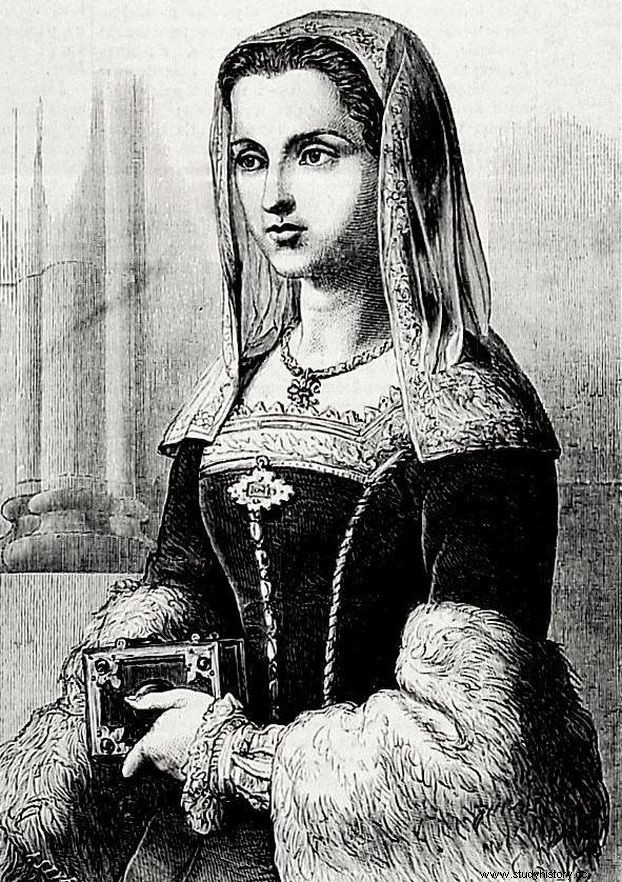
Katarzyna Jagiellonka took Dosieczka with her to the frosty north. Polish princess in a drawing by Jan Styfi from 1864.
The prisoners' nerves were ruined by the screams of those tortured at the king's orders. Catherine's constant fear that she would be separated from her husband (and then her son) and sent back to the bloody Moscow tyrant Ivan IV the Terrible did not help either.
Dosieczka, as one of the few people, served the princely couple in this difficult time. Most likely, she had their children - Izabela, who lived 1.5 years, and her sister, Zygmunt, who was born shortly after the death.
A narrow group of people imprisoned for 4 years got closer to each other. Suffice it to say that despite the considerable age difference, Catherine and Jan created one of the most compatible relationships of that time. Dosieczka also took advantage of this. After the couple's release, she has now become one of the most important people at court.
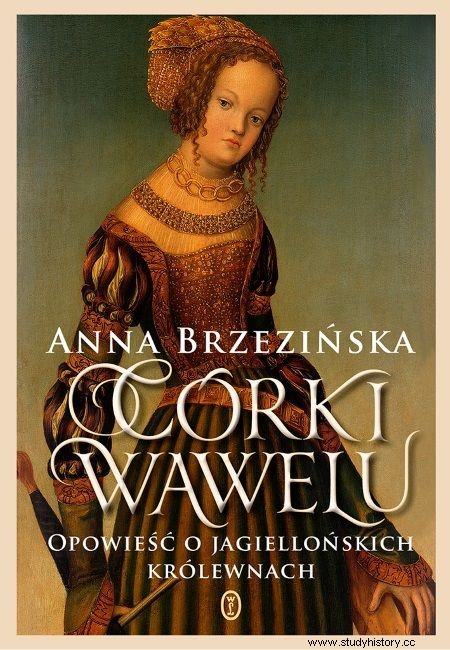
Jagiellonian Poland through the eyes of women! Discover the latest novel by Anna Brzezińska: "Daughters of Wawel. A story about the Jagiellonian princesses ” (Wydawnictwo Literackie 2017).
Piarist Chancellor
Educated and clever, Dosia felt good as a gray eminence. She herself had sworn that she was not the queen's secretary, but merely her steward. The numerous letters left by her, however, seem to belittle her modest assurances.
Niziołka wrote to the most prominent politicians of the Republic of Poland. But most of all, her extensive correspondence with the Duchess of Brunswick Zofia Jagiellonka, Katarzyna's older sister, has been preserved. Thanks to it, we get to know the backstage of Swedish politics, presented with extraordinary fantasy and eloquence.
On October 14, 1567, after an attack of madness, Eric XIV issued a peculiar act. In it, he recognized John as the heir to the throne. Then he called Katarzyna's husband to Stockholm. Dosieczka was an eyewitness to an unusual family scene. As less than a month later, the Duchess of Brunswick, Sophia, wrote about the Swedish king:“God has so deigned to visit him that he took his mind away; what he is doing now, he doesn't know. It reinforced the image of a mad ruler who should be deprived of the throne.
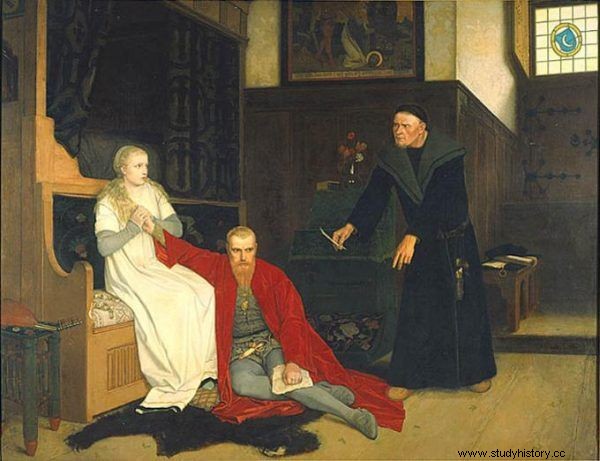
Dosieczka effectively strengthened the image of the mad king Eric XIV. Painting by Georg von Rosen from 1871.
According to her account, Eryk asked his brother for forgiveness, after which:“The King fell to the ground, confessing him to be his king his lord, and himself to be a prisoner; (...) Prince J. M. [Jan] was given the first place; then he returned to Duchess J. M. [Katarzyna] to greet, and he did the same for Prince J. M. K. with the same custom and for the young Prince (...); and he wanted to stand alone in front of the table, which Prince J. M. did not allow him. We, who looked at your chastisement, none was without a great cry, seeing such a great miracle of God. "
When Eryk began to shake off his guilt, John - fearing for his safety - beat his brother's army and imprisoned him, and soon took over the crown.
How do I drop a dangerous prisoner?
It seems that Dosia soon saved Catherine from losing her throne, and maybe even her life. It was she who heard the regular sound from the former treasury where the former king was kept. She quickly figured out that Eric XIV was trying to saw off the grate in the high window.
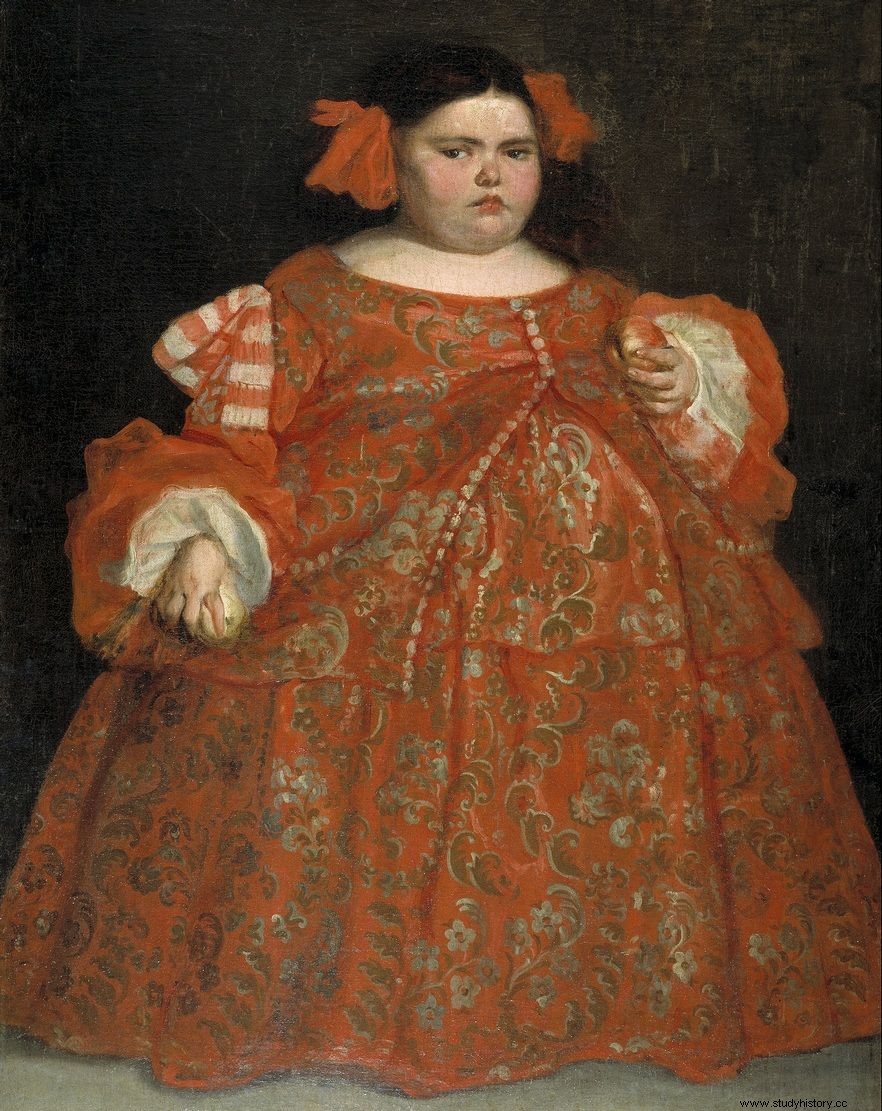
Dosieczka, though tiny, played a great role in the history of Eric XIV's imprisonment. In the painting by Juan Carreñ de Miranda, we can see a 17th-century staple.
Karliczka managed to prevent her escape. She raised the alarm and warned the Poles who were guarding the prisoner, Stanisław Zdrojewski and Mikołaj Opacki. They found a metal file next to Erik, a piece of iron or glass (depending on the version of the story) that made his way to freedom. They also stated by bringing the boy up to the height of the window that the grating had been breached and was about to fall out.
This whole affair might have had a negative impact. Knut Carlqvist points out that the allegedly sawn rod, which is kept to this day ... does not bear any traces of manipulation or sawing ...
According to Anna Brzezińska, the author of the novel "Daughters of Wawel", Dosieczka felt that Eryk was still a threat to Katarzyna's children. So she was waiting for the treasury under the wall. At one point, she raised the alarm and asked the guards to raise her to the window. She said she wanted to check her suspicions. Let us give the floor to the author:
The hole was secured with solid iron rods, probably in the times of King Gustav (...), because some of them had already rusted and loosened a bit in the mortar. (...) Stealthily she took a piece of blue glass out of her apron and held it high above her head.
- He sawed through the bars with this glass!

Jagiellonian Poland through the eyes of women! Discover the latest novel by Anna Brzezińska: "Daughters of Wawel. A story about the Jagiellonian princesses ” (Wydawnictwo Literackie 2017).
(She knew that) if a Finnish prince told his masters that the king was trying to escape, (no one) would start asking uncomfortable questions. They would not inquire where the glass came from in Eric's hands, and how much he could do with it against the iron bars. They will not ask how the king would climb a smooth wall to the ceiling. And John will announce to the whole world Erik's treason.
In any case, new bars were put in, the window was almost completely bricked up, leaving only enough opening for food to be served through it. From then on, it was guarded even more closely, and access to the ex-king was defended by 4 gates. He ceased to pose a threat to the Jagiellonian family.
Educator of the royal children
As Lars Ericson Wolke writes in the biography of Jan III Vasa, “Zygmunt was brought up in the Catholic faith. During the first 5-6 years, Katarzyna was responsible for the religious upbringing of her son, and she was helped by Dorota (...). "
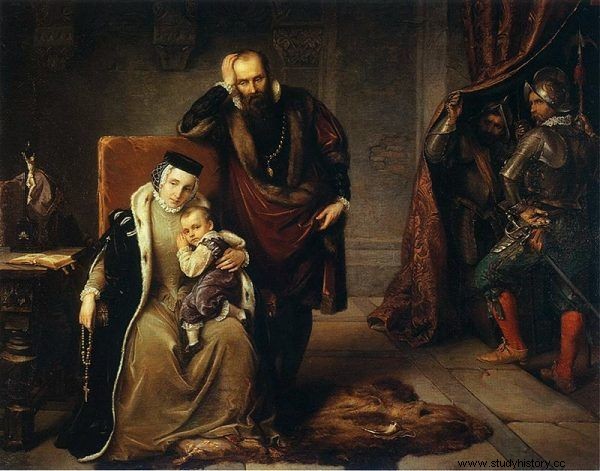
Dosieczka also helped raise Zygmunt III Waza to be a good Catholic. Painting by Józef Simmler from 1859.
Even when Zygmunt was 7 years old, Karliczka spent a lot of time with him. Even then, the boy was a head taller than Dosieczka who was taking care of him. As she wrote herself, "I have a trick on the Prince J. M .:when he is chasing me, then I will sit down on the ground right away, so he won't do anything to me."
According to Anna Brzezińska, Dosieczka also looked after Anna Wazówna. It seems that she had a greater influence on the prince born in Gripsholm. It was she who helped form the heir to the throne of the ultra-Catholic in a Protestant country. Thus, it influenced, for better and for worse, decades of complicated relations between Poland and Sweden.
Buy with a discount on Empik.com:

